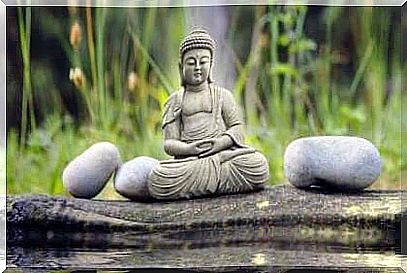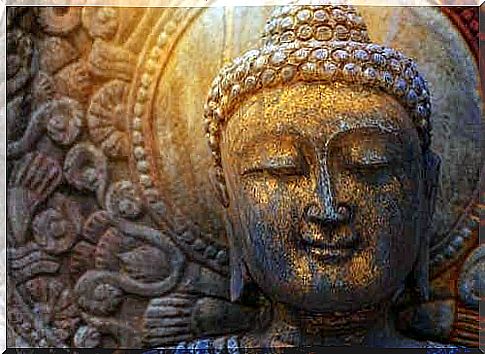The Ten Spiritual Domains Of Zen Buddhism

According to Buddhist cosmology, there are ten spiritual domains that become ten different states of mind. These states then subject the mind to certain feelings in each domain. In other words, predetermined aspects dominate in every moment, according to Zen Buddhism.
Buddhists teach that the ten spiritual realms are not all equal. Four of them are considered superior states and six of them are inferior. The superior states arise from voluntary seeking, the desire for discovery and self-improvement.
The four inferior states concern the reaction to the outside world. These are states of mind in which existence is clearly influenced by external forces. They lead not to evolution but to suffering. So let’s take a look at these ten spiritual domains of Zen Buddhism.

1. Learning
‘Those who hear the voice’ is another name for this domain. It corresponds to those who observe reality, want to know more about it and then are open to discover and understand the truth.
However, this superior state is dependent on the external. People in this state search for truth by what their senses or others tell them.
2. Satisfaction
This is the second of the ten spiritual domains of Zen Buddhism. ‘The awakened one by the motives’ is another name for it.
It corresponds to a greater degree of autonomy. Thanks to observation, effort and meditation, people can then become aware of the ‘why’ of things. In other words, they understand the law of cause and effect and how it materializes.
3. Bodhisattva
The word bodhisattva refers to the state of mind in which practitioners attain enlightenment, primarily through compassion and altruism.
Those in this state feel a genuine desire to free others from suffering and lead them to enlightenment. In this state, giving and helping are sources of happiness and peace.
4. Buddhahood, one of the spiritual realms of Zen Buddhism
Buddhahood, or the state of Buddha, is the highest of the ten spiritual realms. It is also the highest rank of generosity and what identifies those who have attained true enlightenment.
Buddhahood is a state of absolute inner peace that cannot be changed from the outside by any circumstance. It is characterized by wisdom and unlimited compassion.
5. Hell According to Zen Buddhism
Hell is the lowest of the ten spiritual realms. It is a state of mind in which there is an absolute lack of freedom.
In some cases, it’s about being completely overwhelmed by the suffering that holds you captive. In others, hatred and destructive feelings bind and suffocate those in them.
6. Hunger
Unfulfilled wishes dominate the realm of hunger. If there is desire, it is because there is a lack of satisfaction. So whoever desires is doomed by want.
‘Hunger’ in a symbolic sense makes people feel miserable and as a result, they adopt insatiable behavior. If you can creatively transform those desires, then there is a will to be better.
7. Animality
Animalism is a state in which people get instant and irrational gratification. Impulse, not reason or heart, dominate this state.
Animals fear the powerful and abuse the weak. In this state, life is about fighting to survive rather than a space to create. As animality evolves, it becomes loyalty and generosity.
8. Anger According to Zen Buddhism
Also referred to as the domain of disruption, the key feature here is competitiveness. In anger, there is a tendency to compare yourself to others, always with the intention of being better than them.
Those in this state are arrogant to those who are weaker and flattering to those who are stronger. In this case, people can be conscious, but it is only intended to achieve selfish goals. As it evolves, it leads to self-esteem.

9. Humanity
People in this state have the ability to reason. Therefore, they can distinguish good from evil. They also have control over their behavior. Passion for abstract ideals and vulnerability to negativity characterize this state. From there, they have the potential to progress to a superior state.
10. Ecstasy
“Heavenly Beings” is another name for people in this state. Pleasure and the joy of fulfilling wishes and getting what you want define this state. However, this happiness is temporary.
Happiness and enlightenment are different precisely because it is temporary. It depends on uncontrollable external conditions. They have no negative emotions, but that is also temporary.
However, these ten spiritual domains of Zen Buddhism are not arranged in any particular order. In other words, you are not going from one state to another linearly. It is possible to move forward and fall back, although in most people one state predominates.









